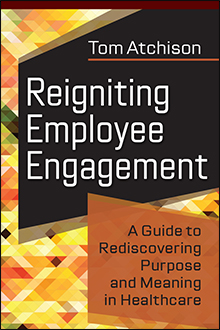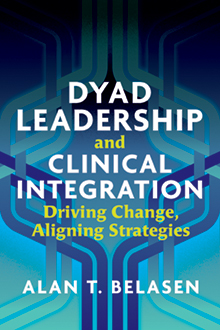Check out this month’s selections for our “What’s On Your Bookshelf?” series from Health Administration Press, the publishing division of the Foundation of the American College of Healthcare Executives. As one of the largest publishers in the field of healthcare management, we have titles for healthcare professionals at every stage of their career and are excited to share our two newest releases. Check them out today.
The Patient’s Primary Care Experience: A Road Map to Powerful Partnerships
Consumer expectations, accreditation requirements and the rise of alternative payment models are driving the future of primary care delivery. The COVID-19 pandemic has been a catalyst for change and innovation, with many services shifting to the virtual environment. Putting patients at the center of the healthcare practice is no longer an aspirational goal—it is rapidly becoming a requirement.
The Patient’s Primary Care Experience: A Road Map to Powerful Partnerships is a handbook for providing patient-centered care. The book focuses on the Patient-Centered Medical Home model, which emphasizes building relationships and enhancing communication. The authors begin by making the business case for the PCMH model and then dive into implementation tips and strategies.
Topics covered include partnering with patients in creating and achieving care goals; improving access through telemedicine, telehealth and shared medical appointments; preventing and mitigating staff burnout while promoting resilience; integrating patient and family perspectives into systems and processes; and enhancing both the patient and staff experience with healing design.
The tools, templates and advice in this practical guide have been tested and refined through the authors’ experience in primary care environments, and they will help your organization increase patient satisfaction and improve outcomes.
Reigniting Employee Engagement: A Guide to Rediscovering Purpose and Meaning in Healthcare
Many organizations know employee engagement is essential to success, but few approach it in the right way. Bonuses, thank-you notes, employee-of-the-month awards and similar initiatives may produce temporary boosts in morale but do not build a long-term culture of true engagement.
Reigniting Employee Engagement: A Guide to Rediscovering Purpose and Meaning in Healthcare presents a simple model for creating sustainable employee engagement. Rising caregiver burnout is an especially critical issue, and this book provides a method for refocusing on basic human needs to reenergize the healthcare workforce.
Author Tom Atchison explores the psychology of why and how people commit to their work while debunking many myths, such as money being the best motivator. Each chapter features an interview with a successful healthcare executive who offers perspective and advice on how best to approach employee engagement. These “performance profiles” allow readers to see how the book’s model applies to real-world scenarios in healthcare.
Dyad Leadership and Clinical Integration: Driving Change, Aligning Strategies
Sometimes, real leadership is about balance. This book breaks new ground in dyad leadership, giving you the tools you need now to establish and sustain exceptional partnerships between physicians and administrators.
You will learn practical strategies based on a proven integrated framework. With this method as a starting point, dyad leaders can group and differentiate roles and competencies to increase quality of care, cut costs and improve the patient experience.
The author synthesizes the expertise of academics, journalists and practitioners with assessments and concepts drawn from psychology, communications, organizational theory and management literature. The results are practical, ready-to-use surveys and data analysis techniques for assessing the sweet spots and weak spots of current and potential dyads and the institutions they lead.



